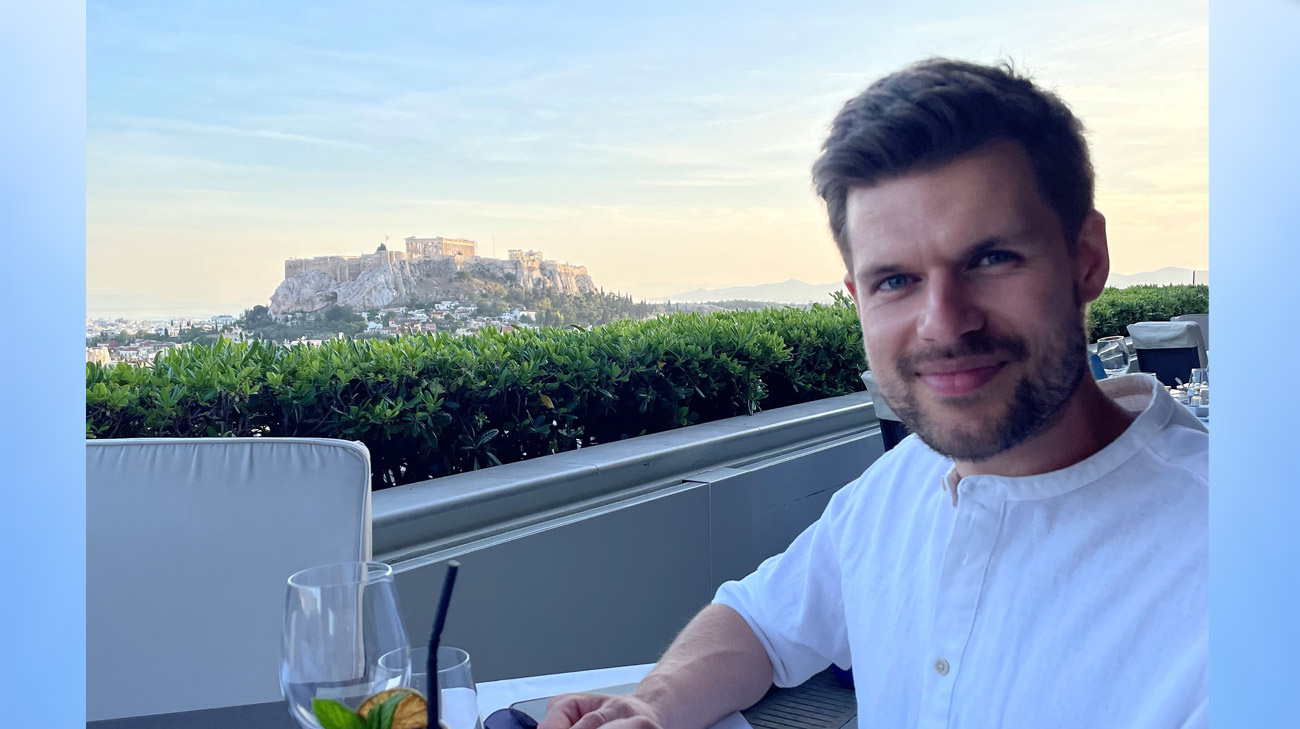
If it hadn’t been for an accidental medical finding early in his life, Adam, now in his late 20s, may not be alive today. Diagnosed with Wolff-Parkinson-White syndrome (a heart rhythm abnormality) at age 14, Adam underwent a heart ablation to treat his condition. Following the procedure, post-operative scans revealed Adam had a congenital heart anomaly known as bicuspid aortic valve abnormality. This meant his aortic valve only had two leaflets that regulate blood flow from the heart to the aorta instead of the normal three.
Bicuspid aortic valve disease often causes no symptoms early in life, which was the case for Adam. But it can lead to serious problems like heart valve failure and aortic aneurysms (widening of the aorta) which can cause heart failure and even sudden death if not closely monitored. Consequently, Adam was vigilant about keeping his twice-yearly appointments with his cardiologist.
In Dec. 2023, Adam’s doctors discovered his aortic and mitral valves had become leaky, a condition known as double valve disease. He was told surgery would be necessary to prevent future complications. Fortunately, and in contrast to many other patients with bicuspid aortic valve disease, his aortic diameters were normal.
“I had just returned from my honeymoon when I found out I needed surgery by the end of the year,” he says. “I always knew I would need it someday but thought it would be in midlife rather than this early.”
Since Adam had private medical insurance, he decided to have the surgery at Cleveland Clinic London due to their reputation for high quality care and the ability to schedule the surgery when it was convenient for him.
“It helped me prepare mentally and gave me peace of mind to know that I could set the date of my surgery and be treated quickly,” says Adam.
He was referred to cardiac surgeon Professor Olaf Wendler, Consultant Cardiac Surgeon and Chair of Heart, Vascular & Thoracic Institute at Cleveland Clinic London.
Prof. Wendler explains, “Adam was referred to me because the condition of his valves had become more severe and put his heart under more stress. As a result, his heart had increased in size which was a sign we needed to consider surgery.
“This also caused a leakage on the mitral valve and that was the reason he was considered for surgical treatment of the aortic and mitral valve, despite not being symptomatic,” he added. “If you have heart valve disease it can either be repaired or replaced depending on how the valve is built and which valve it is.”
In Adam’s case, Prof. Wendler was able to stabilise, repair and close a hole in one of the leaflets in his mitral valve. However, in the aortic valve, the leaflets were calcified and not repairable.
“Because of Adam’s age, a mechanical valve, which is built of Carbon and strong enough to last lifelong, was used to replace the aortic valve,” says Prof. Wendler. “The disadvantage of a mechanical valve is lifelong blood thinning treatment, but other valve substitutes would not last long enough and this modern mechanical valve needs less of blood thinning therapy.”
Adam had surgery on Jan. 11, 2024, and remained hospitalised for eight days. He recovered well in the hospital's ICU and was impressed by the high-quality care he received.
“I had my own room and one ICU nurse dedicated to just me. I didn’t feel like the staff were overburdened. They were all amazing,” he says.
Adam says his recovery has gone well.
“I started doing long walks and recently progressed to light jogs,” he says. “I was able to drive after four weeks and recently returned to work.
“I feel really healthy,” he adds. “I’m looking forward to seeing what I can do with my fixed heart valves.”
Prof. Wendler says the hardest part after surgery is waiting for the breastbone to heal, which takes 10-12 weeks.
“He can now live a normal life and do sports. However, he needs to be careful not to injure himself because of his increased risk of bleeding,” says Prof. Wendler. “Rather than returning to his GP every three months, Adam is now self-assessing his blood thinning treatment at home, which gives him more autonomy over his life again.”
Adam knows how lucky he is since he never experienced the major symptoms of valve disease like shortness of breath or chest tightness that most people do.
“If it wasn’t for everything that happened to me early in my life there’s a chance I wouldn’t be here now,” he says. “I feel very lucky to be alive and fortunate to have had my initial condition which led to the diagnosis and treatment of this condition. I live everyday like it’s brand new and am really enjoying life.
Related Institutes: Heart, Vascular & Thoracic Institute (Miller Family)

